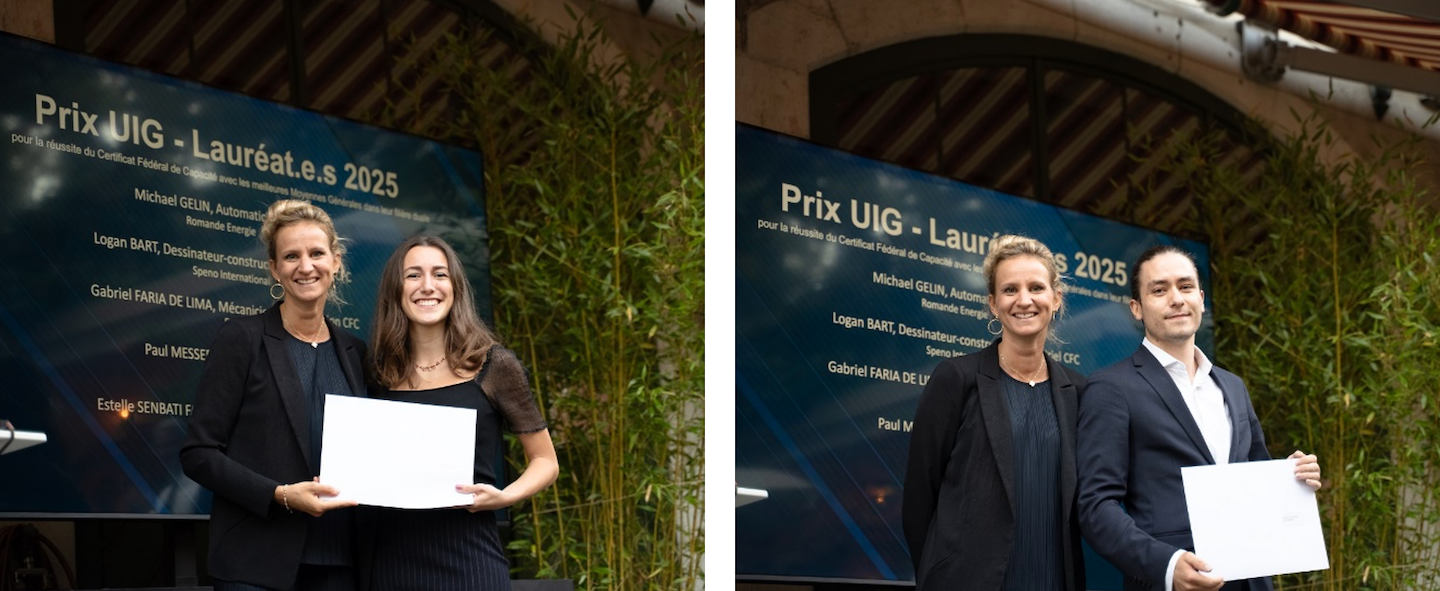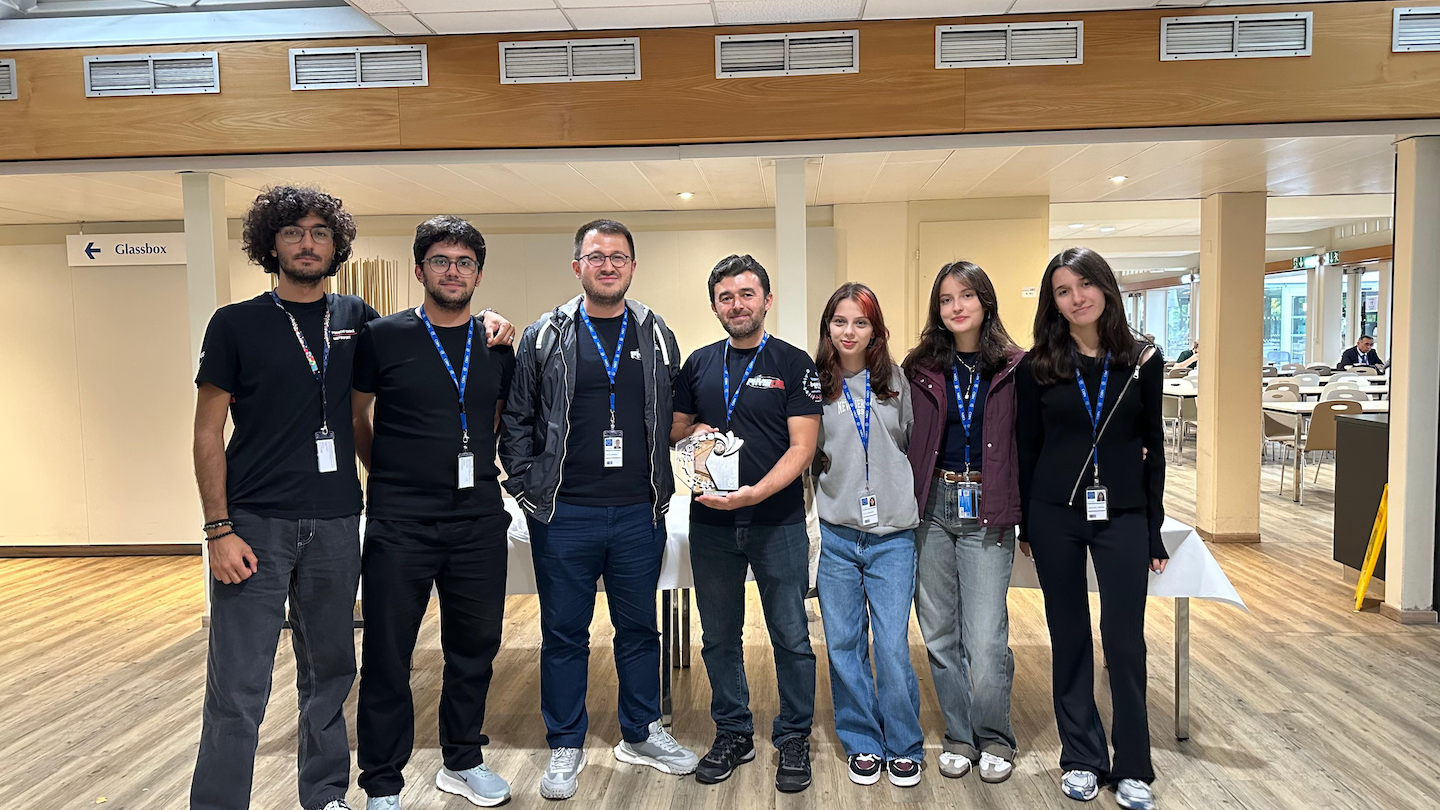CERN extends its congratulations to the eight apprentices who have received their certificat fédéral de capacité (CFC diploma) this year: seven as technicians and one as library assistant.
This year’s graduates include two electronics technicians, Diogo Filipe Goncalves Esteves and Théo Zoller; three physics laboratory technicians, Axel Gyger, Estelle Senbati-Fagi and Yanis Samuel Rabetsimialona; and two polytechnicians, Alexandre Buehlmann and Paul Messerli. They have all been in training at CERN for four years, with the exception of Estelle Senbati-Fagi, who completed her apprenticeship in three years.
Two apprentices who stood out in particular were Estelle Senbati-Fagi and Paul Messerli, who received the Union industrielle genevoise (UIG) prize, awarded every year in the field of industrial mechatronics. Paul Messerli is also the first polytechnician at CERN to receive this award.

Introduced in 2019, the polymechanics apprenticeship now complements the existing pathways of electronics and laboratory physics. It demonstrates CERN’s commitment to providing a learning environment of excellence for young people, combining scientific rigour with technical expertise. More than 330 students have passed through the technical apprentice programme – CERN’s oldest professional training programme – since it began in 1966. The programme was launched by the Geneva authorities, which were keen to start a collaboration with CERN.
Since 1999, in addition to technical apprentices, the programme has included library apprentices. At CERN, 30 young people have received their diploma in this field since the programme was launched. The most recent graduate, Cécilia Flury, received her CFC in 2025 after three years of training.
Laetitia Dufay-Chanat (TE-RAS-APP) is responsible for coordinating technical apprenticeships, while Salomé Rohr (RCS-SIS-LB) is responsible for the library apprentice programme.
The team in charge of the apprentice programme at CERN warmly thanks all of the groups hosting apprentices and, in particular, the supervisors and trainers, for the quality of their management and the constant support given to the apprentices throughout their journey. Without this commitment, the programme would not be possible.
A trophy for education
At the end of their three or four years of training, the apprentices complete a travail pratique individuel (TPI): a final practical exam which is a key step in the qualification process in Switzerland. Keen for his project to be useful to Organization, Paul Messerli had the idea of designing a trophy for one of the competitions organised by CERN. The apprentice in polymechanics created a trophy for the Beamline for Schools (BL4S) competition – another of CERN’s flagship educational programmes. Paul, who was responsible for construction, worked alongside Markus Joos, CERN’s technical coordinator for BL4S and Fabienne Landua, head of the graphic design service. The trophy incorporates the logo for the competition, engraved in metal, and a piece of superconducting cable – a symbol of the technology used at CERN – on a base made of wood, metal and epoxy resin. This trophy was awarded to the five winning teams of 2025 during the time they spent at CERN, at DESY and at the University of Bonn (ELSA accelerator), where they carried out their accelerator-based experiments. “It’s excellent work, and it’s a real benefit for the winning schools to have a memento of the experience they can keep on display,” concludes Jorge Andrés Villa Vélez, leader of the BL4S project and of CERN’s high-school student programmes. |
